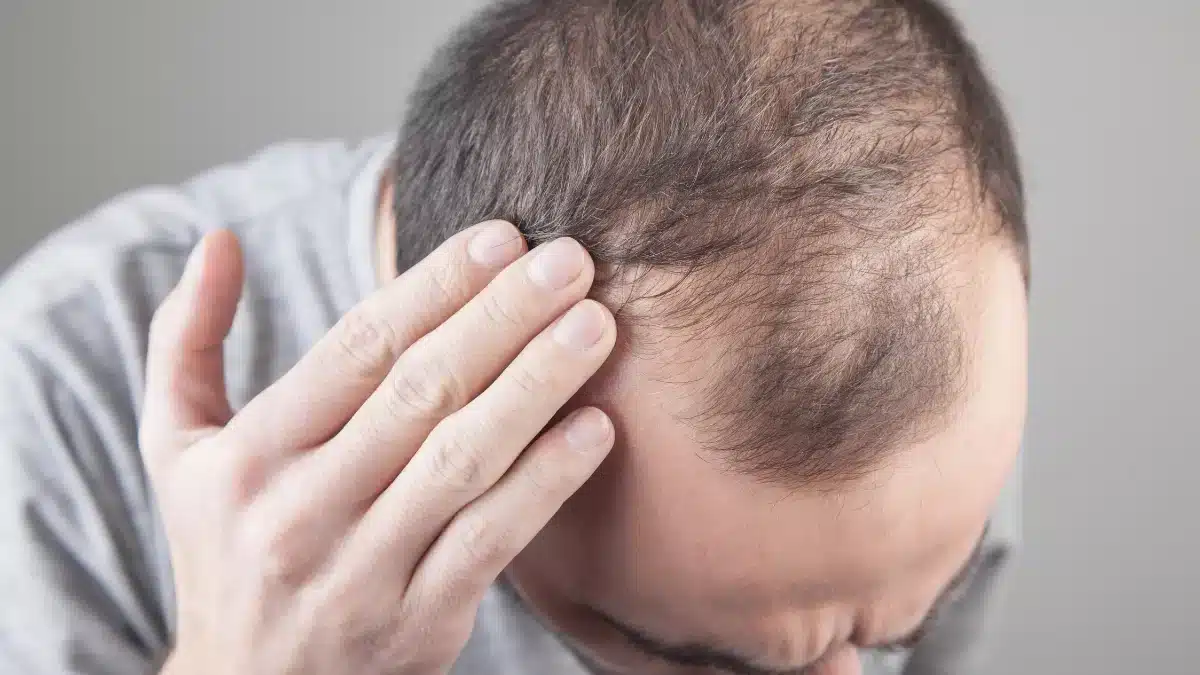How to Stop Alopecia Areata from Spreading: Learn Effective Strategies and Tips
Dealing with Alopecia Areata can be an emotional rollercoaster.
This autoimmune condition leads to sudden hair loss in patches, making it a challenging experience.
However, by adopting a comprehensive approach to managing Alopecia Areata, you can prevent its spread and regain control over your hair.
This article will help you with practical strategies encompassing physical and emotional well-being.
So, let’s deep dive into the topic, “How to Stop Alopecia Areata from Spreading,” and manage it successfully.
Seek expert advice
As per American Academy of Dermatology Association (AAD), a round or oval bald patch on the scalp is the first common sign of Alopecia Areata.
In case you observe such signs, your first step should be to visit a dermatologist specializing in hair and scalp conditions.
They will suggest suitable treatment options and rule out any underlying medical issues contributing to your problem.
Identify and manage triggers
While the exact cause of Alopecia Areata remains elusive, specific triggers can exacerbate the condition.
It could be due to genetics, stress, environmental factors, or hormonal imbalances.
You can significantly reduce the risk of further hair loss by identifying potential triggers and taking steps to manage or avoid them.
Prioritize stress management

Stress and anxiety have been known to worsen autoimmune conditions.
To manage the condition effectively, it is crucial to incorporate stress-reducing techniques into your daily routine.
Find activities that bring you joy and peace, such as meditation, deep breathing exercises, mindfulness, or yoga.
Nurturing your emotional well-being can positively impact your overall health.
Embrace gentle hair care habits
Protecting your hair and scalp is essential to prevent the spread of Alopecia Areata.
Avoid harsh hair treatments, excessive heat styling, and chemical products that could cause further damage or irritation.
You can opt for gentle hair care routines like mild shampoos, conditioners, and wide-toothed combs.
Avoid tight hairstyles and products like hair bands, as they can contribute to hair loss.
Harness the power of topical treatments
Topical treatments can help stimulate hair regrowth and impede the progression of hair loss.
Xeljanz, an effective off-label medication, is often used to treat Alopecia Areata.
Additionally, dermatologists may prescribe corticosteroids in the form of creams, injections, or oral medications to reduce inflammation and encourage hair regrowth.
Explore immunotherapy options
Immunotherapy techniques can redirect the immune response from attacking hair follicles, promoting hair restoration.
Under the guidance of a dermatologist, you may consider topical immunotherapy or other treatments, like Diphencyprone (DPCP) or Squaric Acid Dibutyl Ester (SADBE).
These methods involve applying the products to the affected areas to promote hair replenishment.
Seek support for emotional well-being
Dealing with Alopecia Areata can take an emotional toll on individuals.
Connecting with people who share similar experiences can provide solace and understanding.
Joining support groups, participating in online forums, or seeking counseling can help you navigate the emotional impact of the condition.
Sharing experiences, learning coping strategies, and gaining insights from others can empower and uplift you.
Nurture overall health

Taking care of your overall health is vital in managing Alopecia Areata.
Follow a balanced diet with nutrient-rich foods, vitamins, and antioxidants to support hair growth and strengthen your immune system.
Engage in regular physical exercise, ensure adequate sleep, and stay hydrated.
Prioritizing your well-being will contribute to managing Alopecia Areata more effectively.
Conclusion
Living with Alopecia Areata may present challenges.
However, prioritizing stress management and adopting gentle hair care habits can help prevent its spread and support effective management.
You can regain confidence and lead a fulfilling life by seeking expert guidance and identifying triggers.
Remember, your journey is unique, and with patience and perseverance, you can find the best strategies for you.
Always consult your healthcare provider before trying out any strategies to limit the spread of Alopecia Areata.
Frequently Asked Questions
Why is my Alopecia Areata spreading?
Alopecia Areata, an autoimmune disease spreads because the immune system attacks hair follicles by mistake. The exact reason why the immune system isn’t working right is still unknown, but genetics and other causes may have something to do with it.
How quickly does Alopecia Areata spread?
The progression of Alopecia Areata varies from patient to patient. Some people lose their hair quickly, while others have the same amount of hair for a long time. Due to the condition’s unpredictability, estimating how fast it will spread is challenging.
How long does alopecia spread?
The rate at which Alopecia Areata progresses differs from patient to patient. Some people stop losing hair after a few months, while others lose hair for years. It affects each person differently, and its course can vary a lot.
Do alopecia patches get bigger?
Patches of Alopecia Areata can change in size over time. They might remain the same size or grow by joining other nearby spots. The size of a spot can change over time in different ways for different people.
WowRx uses only high-quality sources while writing our articles. Please read our content information policy to know more about how we keep our content reliable and trustworthy.






